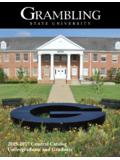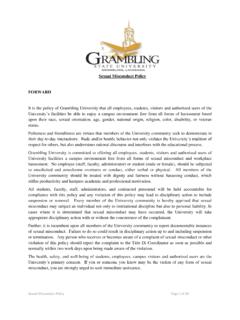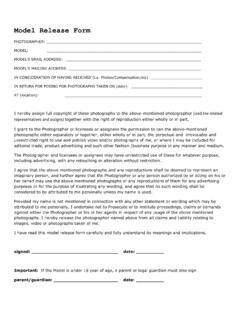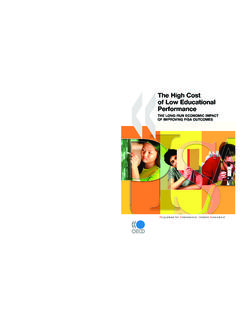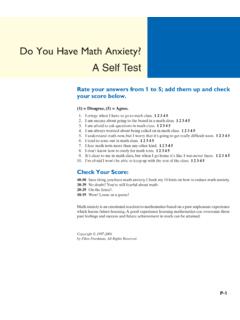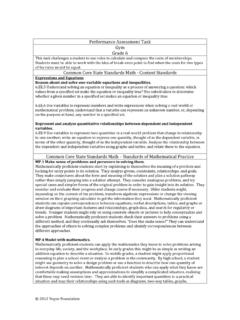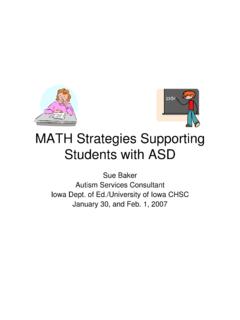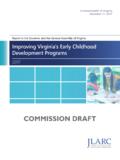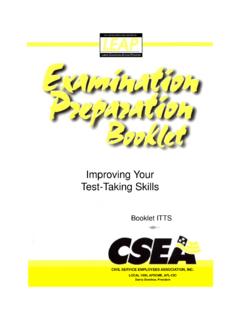Transcription of Best Practices In Teaching Mathematics
1 CLOSING THE ACHIEVEMENT GAP. best Practices In Teaching Mathematics Funding provided by the Claude Worthington Benedum Foundation Spring 2006. 300 Capitol Street, Suite 1100. Charleston, WV 25301. 304-342-7850. CLOSING THE ACHIEVMENT GAP: best Practices IN Teaching . Mathematics . Spring 2006. CLOSING THE ACHIEVEMENT GAP: best Practices IN Teaching Mathematics . Introduction Mathematics is a form of reasoning. Thinking mathematically consists of thinking in a logical manner, formulating and testing conjectures, making sense of things, and forming and justifying judgments, inferences, and conclusions. We demonstrate mathematical behavior when we recognize and describe patterns, construct physical and conceptual models of phenomena, create symbol systems to help us represent, manipulate, and reflect on ideas, and invent procedures to solve problems (Battista, 1999).
2 Recent national test results provide continuing documentation of the need to increase the focus on improving student achievement in Mathematics . The National Assessment of Educational Progress (NAEP) recently released the 2005 math scores which reflected student achievement in the areas of measurement, geometry, data analysis, probability and algebra. Nationally, only 30% of eighth graders were deemed proficient. Although reflecting an increase from previous assessments, only 69% of the eighth graders nationally demonstrated a basic skills level on the NAEP assessment (Olson, 2005). The need for effective instruction in Mathematics was further documented in a February 2006 study by the Department of Education.
3 The study findings are based on data from a nationally representative sample of students from the high school class of 1992 who attended a four-year college. The study found that taking a full schedule of academically demanding courses in high school, including Mathematics beyond The Education Alliance .. 1-866-31-4 KIDS -1- Algebra II, was the single most significant pre-collegiate variable in determining if students graduated from college. The study also found significant disconnects between the high school curriculum and the expectations of the first year of college, suggesting the need to increase the level of challenging academic content in high school.
4 This need to offer a more challenging high school curriculum is even more critical for poor and minority students as they are less likely than higher socioeconomic and white students to attend high schools that offer a challenging curriculum. States moving to increase unit requirements for graduation must also attend to content requirements if they expect to make a difference in student performance (Adelman, 2006). Masini and Taylor (2000) report research documenting that the number of Mathematics topics covered prior to eighth grade is positively correlated to Mathematics achievement while the number of new topics presented at the eighth grade level is negatively correlated to Mathematics achievement.
5 Regardless of math skills before high school, taking algebra in the middle school is strongly related to achievement gains in high school. The math curriculum must provide students with opportunities to learn math at an early age. The poor performance of students in math can be traced to the method used to teach math at the elementary level. The focus is on specific problems and not on building the foundations necessary for understanding higher level math. These foundations can only be built with a Mathematics program that teaches concepts and skills, and problem-solving (Daro, 2006). The Education Alliance .. 1-866-31-4 KIDS -2- The Mathematics Reform Movement The reform movement in Mathematics education can be traced to the mid-1980's and was a response to the failure of traditional Teaching methods, the impact of technology on curriculum and the emergence of new approaches to the scientific study of how Mathematics is learned.
6 Basic to the reform movement was a standards-based approach to the what and how of Mathematics Teaching (Battista, 1999). In the new Mathematics , the focus is on problem solving, mathematical reasoning, justifying ideas, making sense of complex situations and independently learning new ideas. Students must be provided with opportunities to solve complex problems, formulate and test mathematical ideas and draw conclusions. Students must be able read, write and discuss Mathematics , use demonstrations, drawings and real-world objects, and participate in formal mathematical and logical arguments (Battista, 1999). The driving force behind the standards-based approach to Mathematics instruction has been the standards developed by the National Council of Teachers of Mathematics (NCTM).
7 The Principles and Standards for School Mathematics , published by NCTM in 2000, outlines the principles and standards for developing a comprehensive school Mathematics program. The document delineates six guiding principles related to equity, curriculum, Teaching , learning, assessment and technology, and identifies five content and process standards outlining what content and processes students should know and be able to use. The content standards are organized around content strands related to numbers and operations, algebra, geometry, measurement and data analysis and probability. The process standards are organized around the areas of problem solving, reasoning and The Education Alliance.
8 1-866-31-4 KIDS -3- proof, communication, connections and representations (National Council of Teachers of Mathematics , 2000). A set of basic assumptions about Teaching and schooling Practices is implicit in this reform movement. First, all students must have an opportunity to learn new Mathematics . Second, all students have the capacity to learn more Mathematics than we have traditionally assumed. Third, new applications and changes in technology have changed the instructional importance of some Mathematics concepts. Fourth, new instructional environments can be created through the use of technological tools. Fifth, meaningful Mathematics learning is a product of purposeful engagement and interaction which builds on prior experience (Romberg, 2000).
9 A recent concept paper published by the American Mathematical Society has been influential in identifying some common areas of agreement about Mathematics education. The identified areas of agreement are based on three fundamental premises;. basic skills with numbers continue to be important and students need proficiency with computational procedures, Mathematics requires careful reasoning about precisely defined objects and concepts, and students must be able to formulate and solve problems. The areas of agreement emerging from these premises include: Mathematical fluency requires automatic recall of certain procedures and algorithms. Use of calculators in instruction can be useful but must not impede the development of fluency with computational procedures and basic facts.
10 Using and understanding the basic algorithms of whole number arithmetic is essential. The Education Alliance .. 1-866-31-4 KIDS -4- Developing an understanding of the number meaning of fractions is essential. Teachers must ensure that the use of real-world contexts for Teaching Mathematics maintains a focus on mathematical ideas. Mathematics should be taught using multiple strategies, however, the teacher is responsible for selecting the strategies appropriate for a specific concept. Mathematics teachers must understand the underlying meaning and justifications for ideas and be able to make connections among topics. (Ball, Ferrini-Mundy, Kilpatrick, Milgram, Schmid, & Scharr, 2005).
